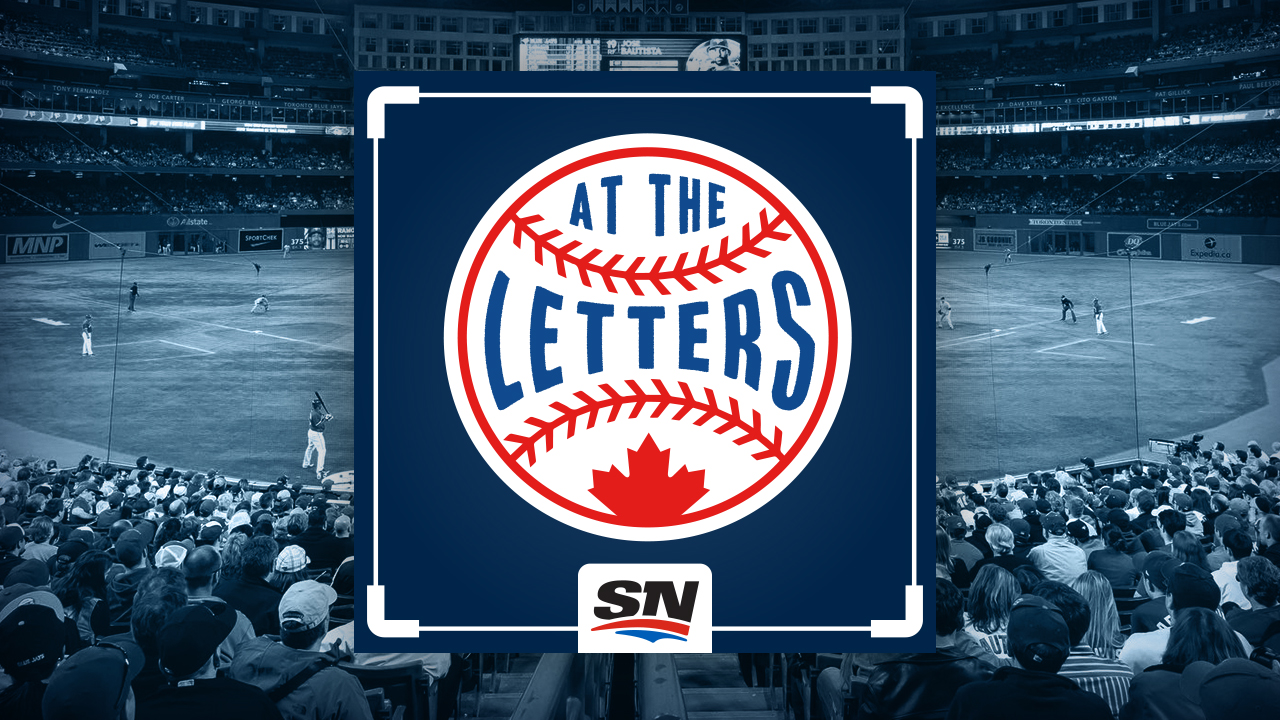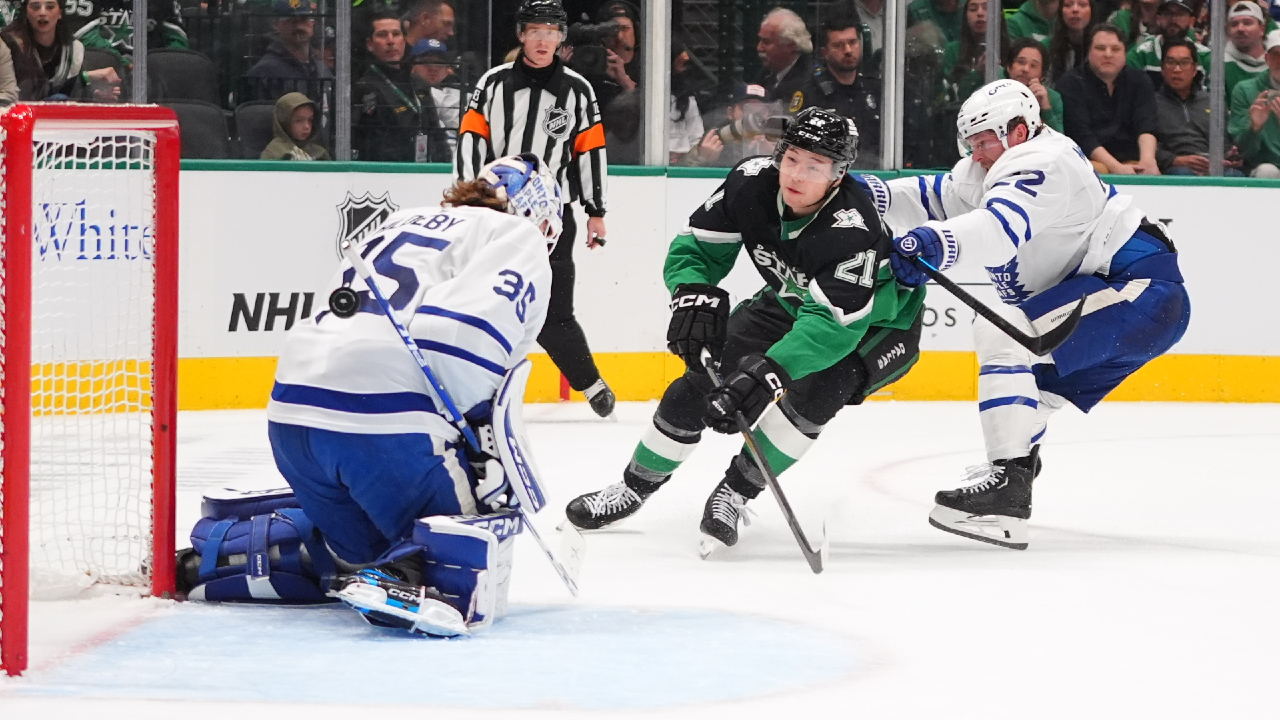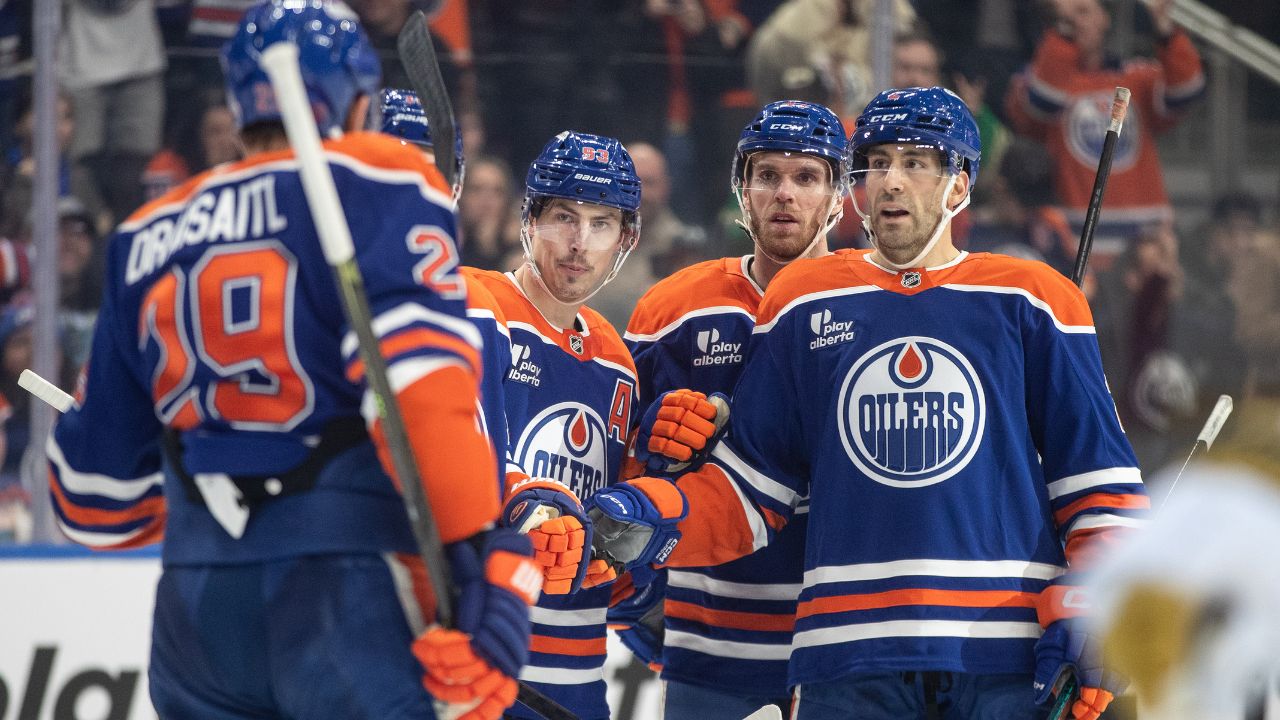
Alek Manoah’s a bold dude who does a lot of bold things, like showing out against the New York Yankees A lineup twice this spring, or saying that his biggest takeaway from facing big-league hitters has been, simply, “the stuff plays.” But this moment right here is up there.
It was the fourth inning of Manoah’s second triple-A start and he was looking in at Jake Noll, a 27-year-old who’s had a couple of cups of big-league coffee with the Washington Nationals. Carrying a no-hitter and facing Noll for a second time, Manoah unleashed a first-pitch slider that made the veteran of more than 1,800 minor-league plate appearances flinch as if it was going to hit him before the pitch landed right over the plate:

Stealing a first-pitch strike with a breaking ball like that is gravy for a pitcher. Now he can do anything. He can attack with his heater. He can drop in a changeup to try to create weak groundball contact. Or, as Manoah opted to, he can go right back to the slider, this time tailing out of the zone and producing a hopeless whiff:
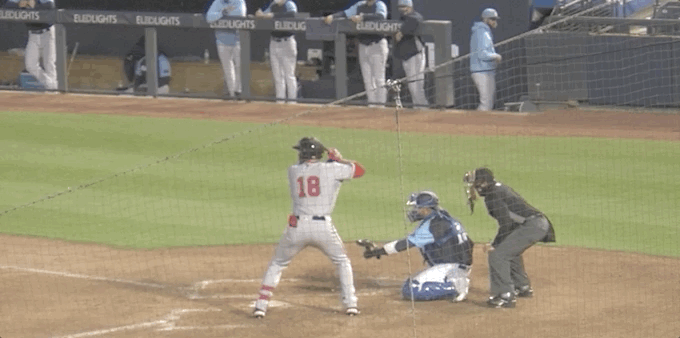
Up 0-2 thanks to his breaking ball, Manoah didn’t deviate — he threw another on the plate that Noll fouled straight back. And then, having shown Noll his slider three times in three pitches, Manoah did this:
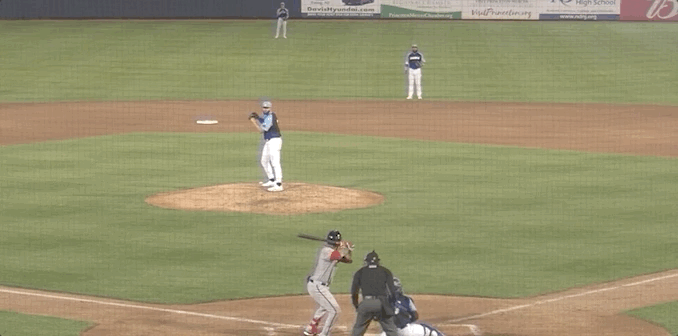
Again, the slider. Again, Noll thought it was going to hit him. Again, it fell right over the plate, this time for a called third strike. And look at Manoah. He’s so certain of the outcome that he’s already taken two strides off the mound and isn’t even looking at the umpire as he’s ringing Noll up.
That’s some big boy baseball and the kind of advanced process that’s underlying Manoah’s dominant results through his first pair of triple-A outings. He’s now allowed only three hits and two walks over 12 scoreless innings, striking out 17. He’s scheduled to be back on the mound for the Buffalo Bisons Tuesday, and if his performance is anything like what what’ve seen over the last couple weeks, it may not be long before the Blue Jays decide they’re ready to see sliders like those being thrown from a major-league mound.
“He’s making that very much something that we’re discussing and talking about,” Blue Jays GM Ross Atkins said before his club beat the Philadelphia Phillies, 10-8, to move to five games over .500
And of course they’re talking about him. Everyone’s talking about Manoah. The Blue Jays are trying to contend and there’s little question as to whether a pitcher of his effectiveness could help the club’s near-term goal of winning ballgames this season. The actual question within Toronto’s front office is what’s optimal for Manoah’s development, and what would best position him to help the club’s long-term goal of winning ballgames in seasons to come.
That is what’s so important about sequences like the one to Noll. Manoah’s mid-to-high 90’s fastball can be such a dominant pitch against minor-leaguers that he has to challenge himself to use his slider and changeup even when he may not otherwise need them purely to get outs. The Blue Jays want to see Manoah showing hitters different looks as he turns lineups over. They want to see him trust himself to throw secondary pitches for strikes in fastball counts. They want to see him doubling, tripling, even quadrupling up on his slider like he did to buckle Noll at the knees.
They want to see an advanced approach and refined process in all aspects of Manoah’s game, on-field and off, before telling Bisons manager Casey Candaele to summon the 23-year-old to his office for the good news. These are the “routines” you hear Atkins reference so often. Preparing for starts thoroughly and executing a carefully considered game plan; being mindful of recovery between outings; sticking to his strength and conditioning program; prioritizing sleep and nutrition; keeping an open dialogue with training and medical staff to help his six-foot-six, 260-pounds body hold up.
“I think one of the things I’m so excited about is Alek’s time away from the field — the time when he’s not pitching,” Atkins said. “The time when he can do things to improve his career and do things to be consistent when he is on the mound has been incredible. He’s been one of the most consistent with his routines, with his work in triple-A. And I personally haven’t met the major league starting pitcher that hauls innings year in and year out and is getting major league hitters out at a regular clip that doesn’t check those boxes. So, that’s exceptionally encouraging for us.”
Still, Manoah’s forcing the issue on the mound. If he’s as dominant Tuesday as he has been through his first two triple-A starts, he may leave the Blue Jays little choice. How many more times would the club’s front office need to see him toy with minor-league opposition? At what point would both the organization and Manoah himself be better served by having those performances pitched in the majors?
Of course, the Blue Jays created this situation by beginning Manoah at triple-A to start the season. If the club had sent him to double-A, three levels higher than short-season Vancouver where he last pitched in 2019, no one would have batted an eye. It would’ve been described as a significant step up in competition.
But based on what Manoah showed them in spring training and during scrimmages at the club’s alternate site this season and last, Blue Jays decision makers determined he was ready to face even more advanced hitting. And in doing so, left themselves with only one place to promote him if he aced that test. It was as clear a sign as any that the club is confident with Manoah making his major-league debut much sooner than many believed he would as the 2021 season began.
“The objective and subjective views of how effective he will be at the major league level are all really encouraging,” Atkins said. “He absolutely maximized his off-season and maximized spring training — and he’s getting absolutely every ounce out of triple-A baseball right now.”
Sure, a major-league debut in the coming weeks would be an untraditionally rapid rise for a player of Manoah’s experience level. He’s pitched in only eight games as a professional — six of them at high-A. But the Blue Jays wouldn’t be the only organization pushing the process with high-upside prospects like Manoah. Andrew Vaughn, selected eight picks before Manoah in the 2019 draft, broke camp with the Chicago White Sox this April. He now shares a clubhouse with 2020 first-rounder Garrett Crochet, who went straight from the University of Tennessee into the White Sox bullpen last summer.
There’s also the Seattle Mariners, who this week promoted top prospects Jarred Kelenic and Logan Gilbert to get their feet wet at the big-league level alongside 2020 AL Rookie of the Year Kyle Lewis, who skipped triple-A entirely. Kelenic — a close friend of Blue Jays prospect Jordan Groshans — is only 21 and arrived in the majors with 179 minor-league games on his CV, only 27 of them above high-A. But with 10 hits and two walks through his first 29 triple-A plate appearances this season, he showed the Mariners enough. And in his second game as a big-leaguer he went deep and doubled twice.
Gilbert is a year older than Manoah but a fellow first-round college pick who’s torn through minor-league competition. After he topped out at double-A in 2019, it took Gilbert just one triple-A start earlier this month to convince the Mariners he was ready for the game’s highest level. If anything, he’s a little late. Casey Mize, Brady Singer and Kris Bubic — all fellow 2019 first-rounders — made their MLB debuts in 2020.
In general, you can expect to see more and more top prospects like Manoah advance to the majors rapidly as developmental philosophies continue to evolve across MLB. Organizations have been shifting closer to an academy-style system for years, which allows clubs to much more tightly control the developmental resources and opportunities provided to young players as opposed to sending them off to live the minor-league grind in small, fly-over towns. It’s a significant part of the upshot the Blue Jays see in their new player development complex, which will allow the club to transition high-level prospects to professional ball much more efficiently than in the past.
The quality of instruction and development at all levels of the game has increased in recent years, too, particularly in the NCAA where a player like Austin Martin had access to 30,000 square feet of modern training and rehab facilities at Vanderbilt University. First-round picks like Martin are arriving in affiliated ball much more polished and prepared than they have in the past, no longer requiring a deliberate, years-long progression up the minor-league ladder to learn how to be professionals.
We’re now seeing young athletes who have been treating baseball like it’s a job since they were in their early teens — through elite travel ball programs, showcase circuits, and private instruction. Take Bo Bichette, who was homeschooled and spent hours each day training at a baseball-specific facility throughout his youth.
Manoah’s upbringing wasn’t quite as privileged, but he was good enough and confident enough to turn down a six-figure offer from the Texas Rangers at 18 to instead play college ball at West Virginia and try to improve his draft stock. And that’s exactly what he did, earning a $4.5-million bonus from the Blue Jays upon being selected No. 11 overall in 2019.
At West Virginia, Manoah made significant physical gains thanks to a more focused strength and conditioning program. He honed his delivery to make it more efficient and repeatable. He refined that overwhelming slider, which he developed with cues taken from studying Dellin Betances’s cutter grip and the way Chris Sale used his thumb to manipulate his slider.
He took significant developmental strides and laid the foundation for the immediate success he’s had as a professional. He advanced his own timeline before the Blue Jays ever had him on one. So, when you hear organizations like the Blue Jays suggest players like Manoah make major-league call-up decisions for them, they’re correct. Particularly with a case like his, in which the club has nothing to gain by manipulating service time.
Of course, it must be said that the most likely outcome upon Manoah’s inevitable big-league debut is he will struggle. Name a young pitcher who hasn’t faced adversity early in their MLB careers. Remember, it wasn’t so long ago that Nate Pearson was doing the same things Manoah is now, slicing through minor-league competition and leaving fans clamouring for him to be promoted with each dominant appearance.
Now Pearson’s back in the minors after a dreadful big-league start last week, trying to rediscover his command and smooth out a disjointed delivery. Meanwhile, Gilbert allowed four runs over four innings in his Mariners debut. And even Roy Halladay famously pitched to a 10.64 ERA over 19 MLB outings as a 23-year-old before making the adjustments that led to his hall-of-fame career.
Development takes time. And Manoah’s will take time, too. But with each dominant triple-A outing, each high-strikeout performance, each nasty slider making hitters flinch as he goes striding off the mound, his time is drawing nearer. Time to find out.



